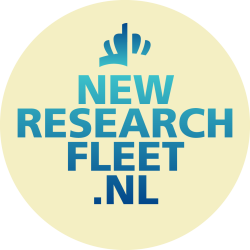New Research Fleet equipment
Under the leadership of the Royal Netherlands Institute for Sea Research (NIOZ), a large consortium of national marine research and education institutes has been focusing, over the past few years, on the now necessary replacement of the national seagoing research fleet. In addition to the ships, the research equipment is also very outdated and no longer meets current standards and possibilities. Just think, for example, of the in-situ, remote collection of research data and samples from the deep sea. The PC-GWI award, granted by NWO, will make this much-needed innovative and advanced research equipment on the new ships available to Dutch researchers and students.
In the ‘Large-scale Scientific Infrastructure programme’ by NWO, NIOZ will develop three major research platforms, Prof Gert-Jan Reichart explains:
“With a new series of so-called gliders, we will have autonomous instruments that will travel the oceans and collect data. With a minimal use of energy, they literally float on layers of water with different densities, more or less like a glider plane does in the air. Every now and then, these gliders will surface and transmit data on temperature, oxygen, salinity, etcetera through satellites to their home base.”
“With an Autonomous Underwater Vehicle, or AUV, NIOZ will have the possibility to collect data in a little bit more precise manner. Reichart: “Unlike the gliders, the AUV’s will have their own propulsion, enabling them to go places where the gliders cannot come, and they can also take water samples.”
A third facility is the Remotely Operated underwater Vehicle, or ROV. “They are unmanned, like the glider and the AUV, but with a physical connection to our Research Vessel. These ROV’s are like robots, that can perform experiments in the deep sea. They are the eyes and hands deep down, of the scientist who can take samples or manipulate objects while aboard the research vessel at the surface.”
- 11 October 2022: Delivery of first undersea robots
- 7 December 2021: High tech underwater gliders provide scientists with latest ocean and climate change information
- 30 April 2020: Large scale scientific infrastructure granted
- 16 November 2022: signing the AUV contract
- 28 January 2025: Contract signing for ROV
